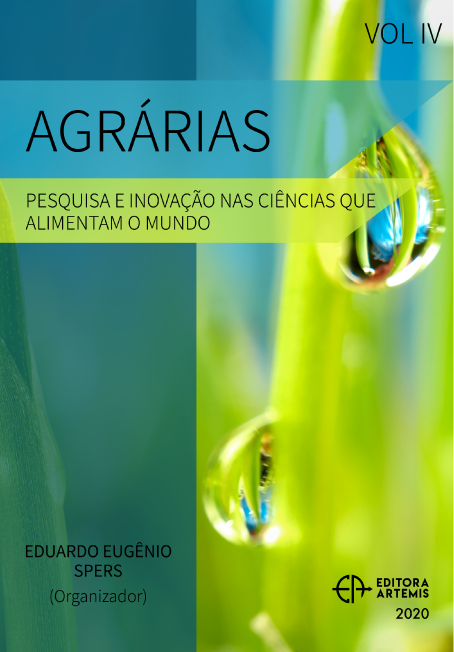
ATIVIDADE INSETICIDA DE EXTRATOS DE PLANTAS COLETADAS NO CERRADO SOBRE LAGARTAS DE SPODOPTERA FRUGIPERDA (J.E. SMITH, 1797)
A lagarta-do-cartucho Spodoptera frugiperda é conhecida por ser a principal praga da cultura do milho, prejudicando desde a emergência até a formação da espiga. O surgimento de populações resistentes aos produtos químicos sintéticos faz com que haja a necessidade do aumento de aplicações destes, causando impactos ambientais, prejudicando a saúde do trabalhador, além de elevar o custo de produção. A utilização de plantas como alternativa inseticida tem sido cada vez mais aprimorada, tendo em vista o potencial seletivo e menor poder residual de inseticidas botânicos. Por serem foto e termo degradáveis e pela complexidade de suas moléculas, há a observação da diminuição dos efeitos adversos ao meio ambiente e ao aplicador, espera-se considerável diminuição de resistência pelos insetos por seus princípios ativos, comparados às aplicações dos inseticidas sintéticos. Por meio da presente pesquisa objetivou-se analisar o potencial inseticida da Simarouba versicolor (St. Hil.) (Simaroubaceae) sobre a lagarta-do-cartucho, Spodoptera frugiperda (J. E. Smith) (Noctuidae). O experimento consistiu em três tratamentos como extrato etanólico de folhas e caule da S. versicolor adicionados a dieta artificial, em diferentes concentrações, sendo elas: 0,1% 0,5% 1% e testemunha (somente dieta). Todas as S. frugiperda alimentadas com dieta artificial no grupo Controle, sem adição do extrato, foram viáveis e se tornaram pupas, entretanto foi observado nos tratamentos com lagartas alimentadas com dieta que continha 1% do extrato etanólico das folhas e do caule da S. versicolor mortalidade larval total. Já nas concentrações de 0,10% e 0,50% houve um efeito deletério com aumento da fase larval em comparação com a testemunha. Os resultados demonstraram que S. versicolor tem potencial inseticida, pois ocasiona problemas no desenvolvimento com alongamento e consequente redução da viabilidade.
ATIVIDADE INSETICIDA DE EXTRATOS DE PLANTAS COLETADAS NO CERRADO SOBRE LAGARTAS DE SPODOPTERA FRUGIPERDA (J.E. SMITH, 1797)
-
DOI: 10.37572/EdArt_2553112203
-
Palavras-chave: inseticidas botânicos; plantas inseticidas; lagarta-do-cartucho; Simarouba versicolor; controle de pragas agrícolas.
-
Keywords: botanical insecticides; insecticidal plants; cartridge caterpillar; Simarouba versicolor; agricultural pest control.
-
Abstract:
Cartridge caterpillar Spodoptera frugiperda is known to be the main pest in maize culture, damaging from emergence to ear formation. The emergence of populations resistant to synthetic chemicals means that there is a need to increase their applications, causing environmental impacts, harming workers' health, in addition to raising production costs. The use of plants as an insecticide alternative has been increasingly improved, in view of the selective potential and less residual power of botanical insecticides. Because they are photo and term degradable and due to the complexity of their molecules, there is an observation of the reduction of adverse effects to the environment and to the applicator, it is expected a considerable decrease in resistance by insects due to their active principles, compared to the applications of synthetic insecticides. The aim of this research was to analyze the insecticidal potential of Simarouba versicolor (St. Hil.) (Simaroubaceae) on the cartridge caterpillar, Spodoptera frugiperda (J. E. Smith) (Noctuidae). The experiment consisted of three treatments such as ethanolic extract of leaves and stem of S. versicolor added to the artificial diet, in different concentrations, namely: 0.1% 0.5% 1% and control (diet only). All S. frugiperda fed an artificial diet in the Control group, without the addition of the extract, were viable and became pupae, however it was observed in treatments with caterpillars fed with a diet that contained 1% of the ethanolic extract of the leaves and stem of S. versicolor total larval mortality. At concentrations of 0.10% and 0.50%, there was a deleterious effect with an increase in the larval phase compared to the control. The results showed that S. versicolor has an insecticidal potential, as it causes development problems with elongation and consequent reduction in viability.
-
Número de páginas: 12
- Danielle Beatriz de Lima
- Ana Caroline de Sousa Barros
- Arielly Lima Padilha
- Camila Francielli Vieira Campos
- Elias Leão de Figueiredo
- Felipe Henrique de Sousa Mendes
- Fernando carvalho de Araújo
- Júlia Maria Mello Becker
- Mariana Moreira Lazzarotto Rebelatto
- Raphael Daltro Solano
- Winy Louise da Silva Carvalho

